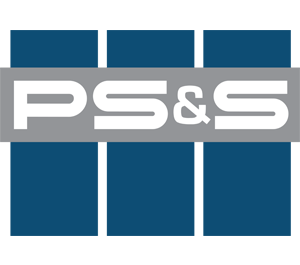Bridge collapse signals wider problems
The Genoa, Italy, bridge collapse in August that killed 43 could portend tragedies in the United States as well in light of its own deteriorating infrastructure and inadequate investments in maintenance and improvements.
And design professionals, including architects and engineers, could find themselves facing significant liability if they fail to take advance defensive measures, experts warn.
Many experts point to the 2017 biennial report by the Washington-based American Society of Civil Engineers, which gave U.S. infrastructure an overall D+ rating and concluded that 9.1% of the nation’s bridges were structurally deficient in 2016.
They cite the 2007 bridge collapse in Minneapolis that killed 13 and the under-construction pedestrian bridge in Miami that collapsed in March, killing six, as examples of these types of incidents that have already occurred.
“It’s pretty well understood that overall in the United States we just haven’t spent the money in terms of maintaining existing infrastructure or increasing capacity to infrastructure in major metropolitan areas in particular,” said Brian Cooper, San Francisco-based managing director of construction for Arthur J. Gallagher & Co.
“We’re just really way behind the curve.” Litigants will turn to design professionals if an incident occurs, say observers.
“Design professionals often find themselves liable whenever there’s a catastrophe. When there’s third-party injuries, they’re often brought in, right or wrong, into those types of lawsuits,” said Dan Buelow, Chicago-based managing director of Willis Towers Watson PLC’s architects and engineers division.
However, “you would have to show negligence on the part of the engineer or architect,” which is the legal standard applied to all professionals, said Mark Peterson, Chicago-based managing director and design professional practice leader for Aon PLC.
A structural collapse is rarely caused by one error or failing, though, said Mike Davis, Philadelphia-based lead underwriter for construction professional liability for Zurich Insurance Group Ltd.
It could be a combination of design errors, including poor workmanship, material that reacts in an unexpected way, or “the actual structure being used in a way different than originally contemplated,” he said.
“Firms with good internal risk management practices and quality assurance procedures can more effectively manage” infrastructure projects, which will help prevent or mitigate losses, said Kevin J. Collins, a Chevy Chase, Maryland-based underwriter and senior vice president with Victor O. Schinner & Co.
Design professionals “need to have a clear ‘go, no go’ procedure in place to evaluate every project,” said Mr. Buelow. They must decide if their firm is in position to meet the project’s needs, if they have the right clients, if there is a fair and insurable contract, and if it makes financial sense, he said.
Robin Kemper, who is president-elect of the ASCE and a senior risk engineering consultant with Zurich North America, said the society recommends that in responding to a request for proposal, a life-cycle cost analysis be included in describing the scope of work for any project over $5 million.
“It’s very important that the interchange between owner and designer and contractor is clear, and also clearly documented,” said Jeff Burns, Denver-based partner with JLT Specialty USA, a unit of Jardine Lloyd Thompson Group PLC.
The contract should also clearly articulate the generally accepted standard of care for the structure, said Brett Fowler, Farmington, Connecticut-based vice president and program manager for AmWINS Group Inc.’s architects and engineers program.
“Without that reference to the standard of care, there really is no benchmark to reference. It’s critical that be included in the contract,” Mr. Fowler said.
“Renard Barnes, general counsel for PS&S Integrated Services, a Warren, New Jersey-based architecture and engineering firm, said that when asked to look at a structure, his firm likes clients to initiate an ‘exhaustive review of the existing conditions.’”
Design professionals have “to really understand the intended and the potential future use” of the project, said Louis A. Gritzo, Norwood, Massachusetts-based vice president for research and international codes and standards for FM Global.
Design professionals may need to report to the authorities if a public safety or health issue is involved and “the situation calls for it,” said Nahom A. Gebre, a Chevy Chase, Maryland-based risk management attorney with Victor O. Schinnerer & Co.
In addition, design professionals should be sure “that they’re not coming in as the deep pocket in assets as well as insurance, so that they remain in a claim because of the assets they have to offer,” said Barbara Sable, Rockville, Maryland-based assistant vice president for RLI Corp.
Architecture and engineering firms do not need to be afraid of asking insurers questions or reporting potential claims, said David Zell, New York-based vice president of alternative markets for QBE North America, a unit of Australian insurer QBE Insurance Group Ltd. If a disgruntled owner has threatened to file suit, “it’s OK to report that. We’re not going to hold that against you,” he said.

